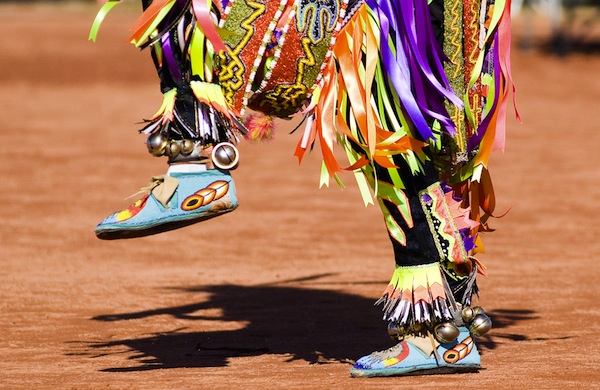
The history of Tucson may officially begin with the completion of Presidio San Agustín by Spanish soldiers in 1775, but the area was occupied long before that. In fact, Native American nations such as the Tohono O’odham have resided in Southern Arizona for thousands of years. And it’s not as if it’s hard to spot their influence. On the contrary, Native art and culture is prevalent throughout the city. For visitors, a list of quintessential Tucson things to do would largely involve getting in touch with the city’s Native American roots in one way or another. Here are a few ways to do just that.
About an hour outside Tucson in Dragoon, the Amerind Foundation displays the Native American art and artifacts it’s been collecting since 1937. Upstairs in the Ethnology Room, you’ll find a bow made and signed by Geronimo alongside Navajo pipes and jewelry. Across the way is a room devoted entirely to textiles, including rugs woven by the Hopi and Tarahumara. And over in the Amerind Archeology Room, you’ll find baskets, clothing, and other artifacts discovered during the foundation’s own excavations.
Still, it’s hard to outdo the Arizona State Museum (as in the state of Arizona, not ASU), whose collection figures are staggering: 25,000 pieces of baskets and weaving, including one of the largest known Navajo rugs; 500,000 photographic negatives and prints; and 40,000 ethnographic items, including hundreds of folk masks and costumes. The museum has also been home to temporary exhibits showcasing everything from '70s-era Hopi quilts to ancient southwestern architecture.
Shop for Arts and Crafts
Finding fine art, jewelry, and textiles that represent Tucson’s Native American culture isn’t difficult. Shops like Bahti Indian Arts offer large collections of Tohono O’odham baskets, Hopi pottery, and Navajo rugs. Textiles are also a major specialty at Nizhoni Ranch Gallery in Sonoita, which sells both contemporary and historical rugs and weavings. For seriously rare items, you can always try Gallery West, where the selection has been known to include a pair of 1880s moccasins as well as pottery from the early 1900s.
If you’d like to attend a celebration of Native American culture in Tucson, you won’t have to wait long. February brings the Arizona State Museum’s Southwest Indian Art Fair, which is soon followed by March’s Wa:k Pow Wow, a two-day blur of dancing, drumming, and singing held at the historic Mission San Xavier del Bac. Come October, visitors can take part in a traditional American Indian feast thanks to the North American Indian Information and Trade Center, and in November, they can browse crafts, watch ceremonial dancing, and eat traditional foods at the Native American Heritage Month Social & Craft Market.






